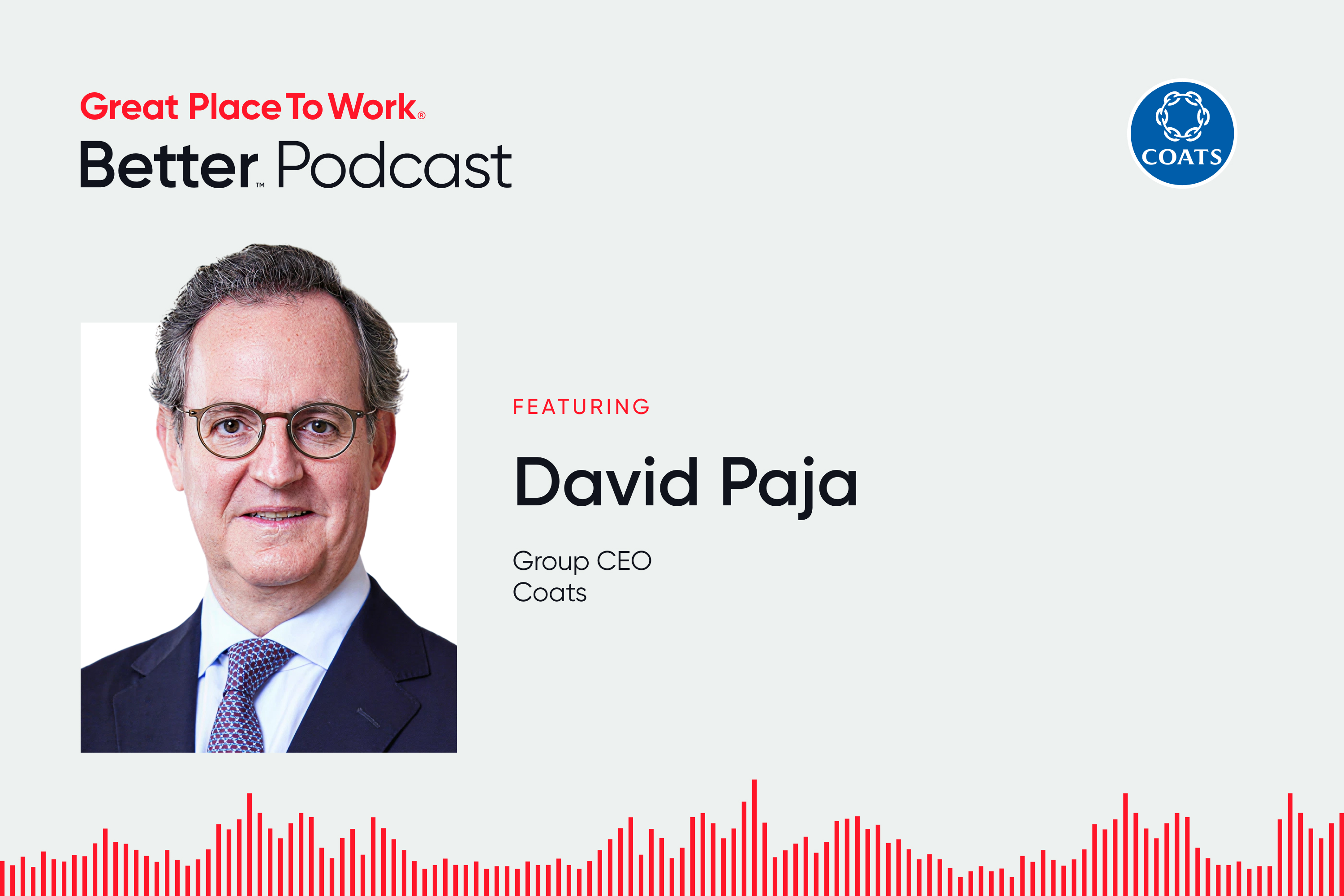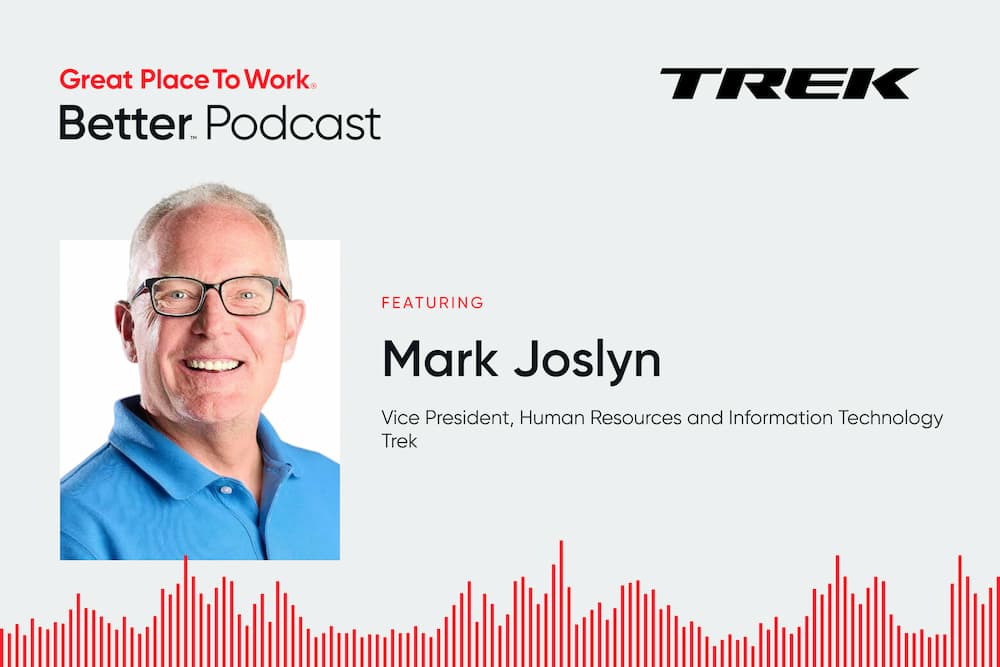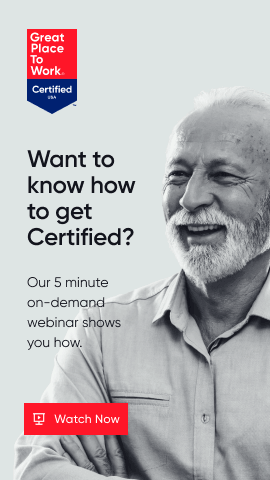New research from Great Place To Work explores the strategies used by the performance materials innovator to foster well-being in challenging conditions.
A manufacturing leader might not be the first place you look for lessons on employee well-being, particularly when they operate in underdeveloped regions like Vietnam and Bangladesh. However, Coats — an innovative performance materials producer of thread, shoe materials, fiber optics, and more — far exceeds expectations for its global workforce across 55 countries.
Great Place To Work® studied the company’s culture, including employee well-being initiatives, to understand how Coats improves the lives of frontline workers in a stereotypically dangerous industry. At Coats, employees are having a much better experience than what you might expect for the industry, thanks in part to an initiative called “Energy for Performance (E4P).”
This initiative, and its impact on employees across China, India, Indonesia, Vietnam, and Bangladesh, is the focus of a new report, titled “Weaving Global Patterns of Wellbeing.”
Highlights include stories like the “Clear Vision Programme” in Bangladesh — which helps meet the need for eye care and corrective lenses, an underappreciated issue for workers in the region — as well as data showing how these efforts improve the employee experience. The report explores the connection between mental, social, emotional, and physical health and shares examples of how Coats targets these different facets of well-being.
Download your copy of the report.
Coats employees with higher levels of well-being have improved performance at work.
“When you invest in well-being, you do more than enhance the health of your employees —you cultivate a culture where people feel truly valued, supported, and empowered to thrive,” says Farnaz Ranjbar, chief human resources officer at Coats. “This not only unlocks their full potential but also fuels lasting success for them, for the company, and ultimately, for the world.”
At Coats, there is a belief that investing in employees drives business results. “Our share price is up 30 to 40% this year,” shares Adrian Elliott, CEO of apparel at Coats. “Our profit margins and our growth are up. Our culture has helped integrate some important acquisitions, too.”
Meeting the needs of a global workforce
With its vast global footprint, Coats offers a powerful case study for leaders on how to create well-being initiatives that remain flexible to meet the varied needs of a workforce spread across six continents.
The company identified four energy areas as part of the Energy for Performance framework: mental energy, physical energy, social energy, and emotional energy.
For each energy zone, Coats offered clear, repeatable activities that leaders across the globe could use to develop their people and improve well-being.
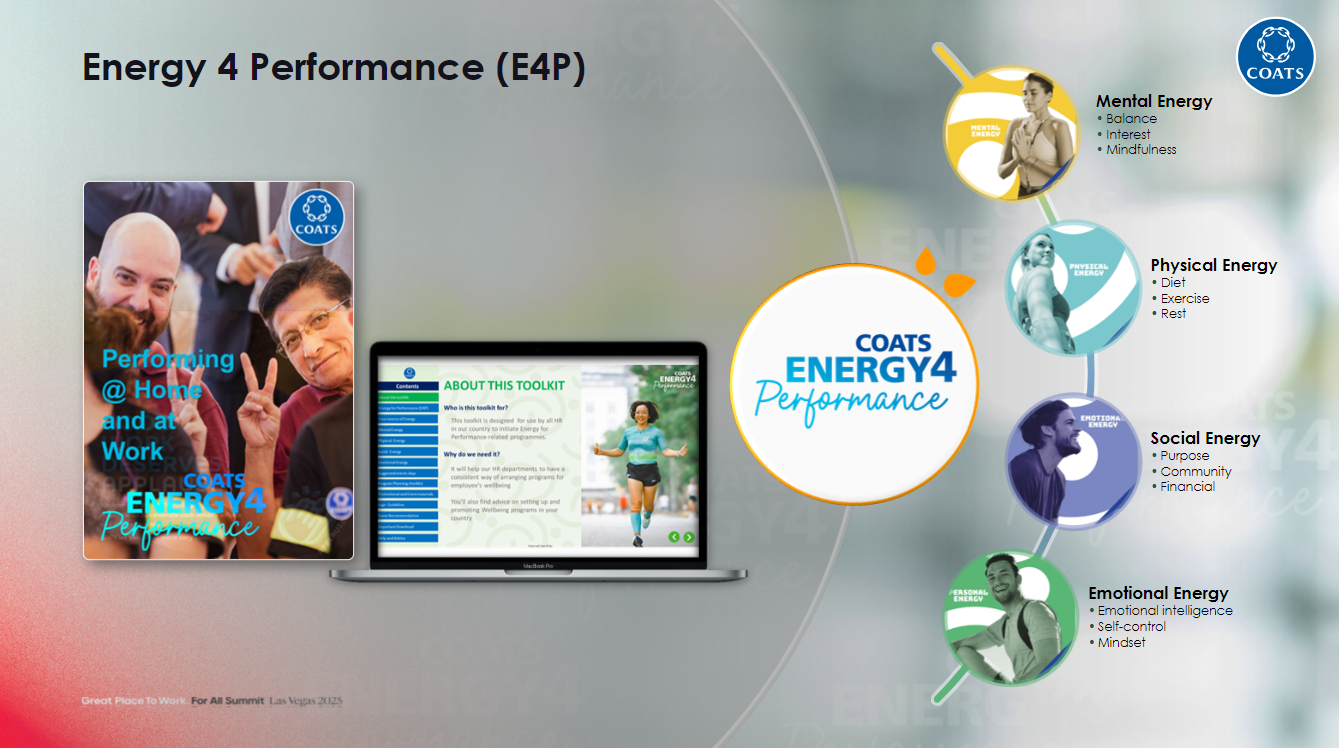
“We made it practical for them,” says Joe Mamone, global vice president of human resources and employee experience. Leaders reported their activities for each energy zone back to the human resources team, and a monthly newsletter shared success stories. By the end of 2024, Coats hosted 566 initiatives with over 54,000 hours of employee activity globally.
Tips for improving well-being on a global scale
Coats’ commitment and performance show that well-being is a powerful performance indicator for businesses around the world.
As with any initiative targeting improved employee experience and engagement, the execution matters just as much as the strategy. Coats leaders shared some important lessons from their work — insights that offer a helpful guide for any organization that wants to improve employee experiences.
1. Focus on inspiring local leaders rather than controlling outcomes.
The success of the Energy for Performance program comes from how each country personalizes their offerings to fit the framework. Each country has different cultural expectations and employee preferences, and local leaders tailor their programs to match these.
The trick is to harness the creativity of local leaders. “If you’re trying to just bring in a programme, it’s not going to work,” Mamone says. “What you need to do is get the essence into the mindset of the leaders at a local level. Then, they personalize it, and there is more buy-in.”
2. Build psychological safety.
Coats started to see dramatic results from its E4P program as more employees felt comfortable sharing their experience with leaders, either in employee surveys or meetings with their manager. “I think we fostered a culture where people feel safe to ask for help,” Ranjbar says.
It was imperative that Coats changed mindsets and raised awareness before launching new tools to promote well-being. Once employees understood that leaders wanted to know more about their experience, they were more willing to engage as new tools were rolled out around the world.
“It’s about creating the awareness and then providing the tools,” Ranjbar says.
3. Make well-being a priority for the entire business.
“There’s no reason that this should be just an HR initiative,” Mamone says. When HR leaders effectively communicate the business impact of well-being, everyone should be invested in the effort to improve workplace culture.
“What I always say is, how do you create those business leaders as ambassadors?” Mamone advises. That means working with your leadership to understand their unique passions and interests and getting buy-in from key decision makers.
Ranjbar looks at her employee survey data, where more and more employees are asking about well-being, and she sees an imperative for action across the business. What’s more, Coats connects increasing employee engagement with rising financial performance.
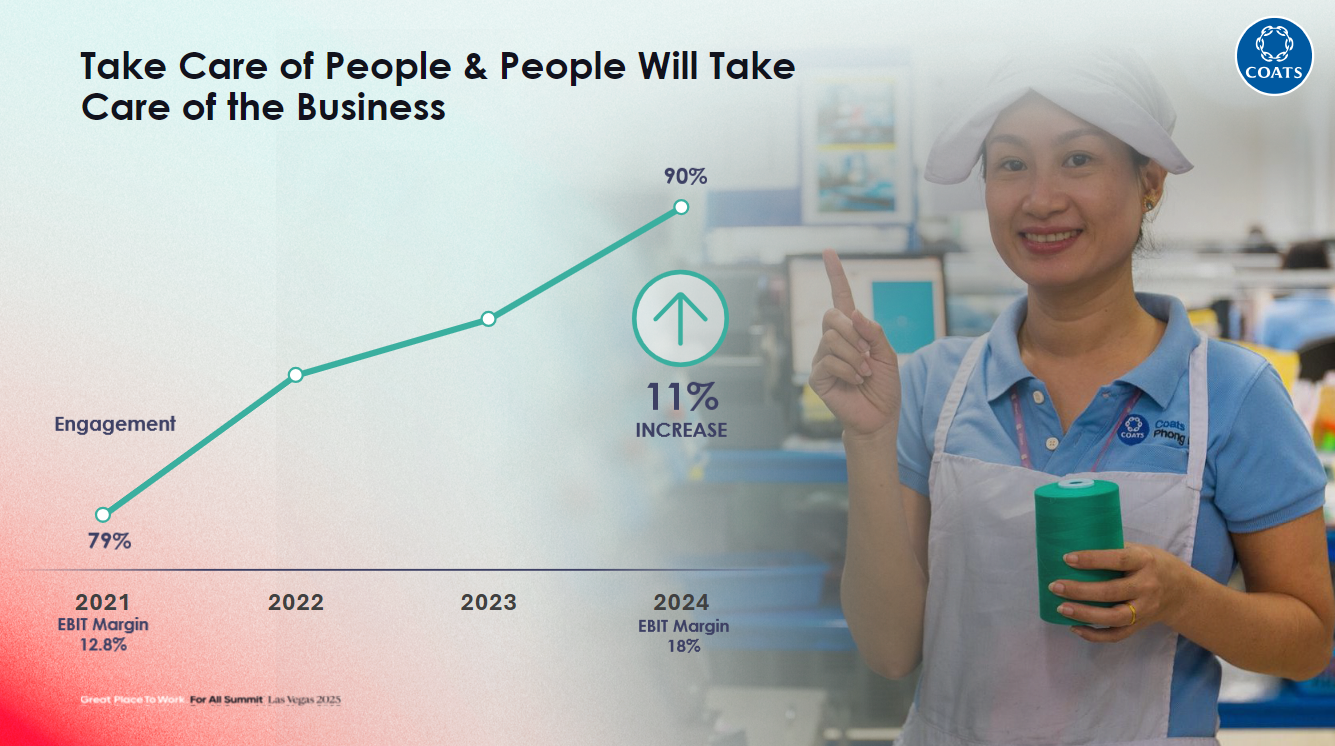
Building well-being for all
Coats has built a global manufacturing culture that reveals the power of investing in your people. In just one year, they already see improvement on key measures of the employee experience, and dramatically outperform their peers in countries where employees often lack basic protections in the workplace.
From this culture, Coats has built an innovative and resilient business that provides textiles at the heart of the global apparel and footwear industries. Through the contributions of employees who love their work, Coats is on the cutting edge of innovation with products that set the stage for a new generation of consumer products.
As a trusted partner to some of the world’s biggest brands, Coats’ reputation starts with its employees. A culture of trust is what empowers the global textile brand, and why so many around the world trust the company to deliver.




